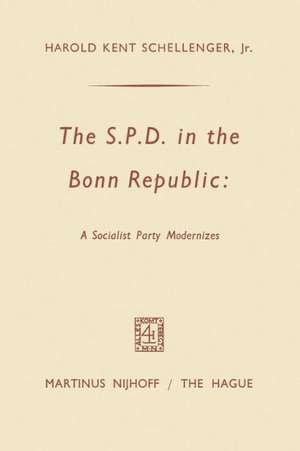The SPD in the Bonn Republic: A Socialist Party Modernizes
Autor Harold Kent Schellengeren Limba Engleză Paperback – 1968
Preț: 386.00 lei
Nou
Puncte Express: 579
Preț estimativ în valută:
73.86€ • 77.33$ • 61.26£
73.86€ • 77.33$ • 61.26£
Carte tipărită la comandă
Livrare economică 09-23 aprilie
Preluare comenzi: 021 569.72.76
Specificații
ISBN-13: 9789401504188
ISBN-10: 9401504180
Pagini: 260
Ilustrații: 247 p.
Dimensiuni: 155 x 235 x 14 mm
Greutate: 0.37 kg
Ediția:1968
Editura: SPRINGER NETHERLANDS
Colecția Springer
Locul publicării:Dordrecht, Netherlands
ISBN-10: 9401504180
Pagini: 260
Ilustrații: 247 p.
Dimensiuni: 155 x 235 x 14 mm
Greutate: 0.37 kg
Ediția:1968
Editura: SPRINGER NETHERLANDS
Colecția Springer
Locul publicării:Dordrecht, Netherlands
Public țintă
ResearchCuprins
I: Background.- I: A Short History of German Socialism.- II: Ideological Development in the Postwar Period.- II: The New Program.- III: How the Program was Adopted.- IV: How the Program was Adopted [continued].- III: The New Leadership; the New Style.- V: How the Guard was Changed.- VI: How the Guard was Changed (continued).- VII: The Evolution Completed.- IV: Socialism in the New Europe.- VIII: Conclusions.- Epilogue.- Epilogue.- Appendices.






